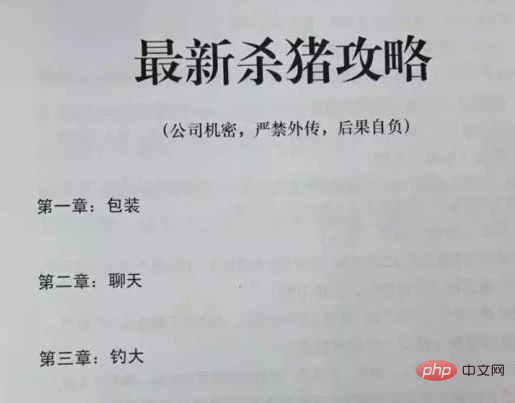如何构建一个系统,用于从非结构化的文本中提取结构化的信息和数据?哪些方法使用这类行为?哪些语料库适合这项工作?是否可以训练和评估模型?
信息提取,特别是结构化信息提取,可以类比数据库的记录。对应的关系绑定了对应的数据信息。针对自然语言这类非结构化的数据,为了获取对应关系,应该搜索实体对应的特殊关系,并且用字符串、元素等一些数据结构记录。
实体识别:分块技术
比如:We saw the yellow dog ,按照分块的思想,会将后三个词语分到NP中,而里面的三个词又分别对应 DT/JJ/NN;saw 分到VBD中;We 分到NP中。对于最后三个词语来说,NP就是组块(较大的集合)。为了做到这点,可以借助NLTK自带的分块语法,类似于正则表达式,来实现句子分块。
分块语法的构建
注意三点即可:
基本的分块:
组块 :{组块下的子组块}(类似于:"NP: {3c7d5858e48edc7bb17af0ecefbb969f?6cfae209252e1b07fe4ad75a2fa1207e*5fc4495b6ab379cc2effe1ed9ae99dc1}"这样的字符串)。而?*+保存了正则表达式的意义。
import nltk
sentence = [('the','DT'),('little','JJ'),('yellow','JJ'),('dog','NN'),('brak','VBD')]
grammer = "NP: {<DT>?<JJ>*<NN>}"cp = nltk.RegexpParser(grammer) #生成规则result = cp.parse(sentence) #进行分块print(result)
result.draw() #调用matplotlib库画出来可以为不包括再大块中的标识符序列定义一个缝隙:
}de249b3114fb1469cc68e2fe29baa3f0+{
import nltk
sentence = [('the','DT'),('little','JJ'),('yellow','JJ'),('dog','NN'),('bark','VBD'),('at','IN'),('the','DT'),('cat','NN')]
grammer = """NP: {<DT>?<JJ>*<NN>} }<VBD|NN>+{ """ #加缝隙,必须保存换行符cp = nltk.RegexpParser(grammer) #生成规则result = cp.parse(sentence) #进行分块print(result)可以递归式的调用,这符合语言结构中的递归嵌套。例如:
VP: {f33e0e9799d61cc5dd2a85bb2d5920ae*} PP:{5fc4495b6ab379cc2effe1ed9ae99dc1c068b0175345b8eb93ba13c561f8b4a4}。此时,RegexpParser函数的参数loop即可以设置为2,多次循环,来防止遗漏。
树状图
如果调用print(type(result))查看类型就会发现,是 nltk.tree.Tree。从名字看出来这是一种树状结构。nltk.Tree 可以实现树状结构,并且支持拼接技术,提供结点的查询和树的绘制。
tree1 = nltk.Tree('NP',['Alick'])print(tree1) tree2 = nltk.Tree('N',['Alick','Rabbit'])print(tree2) tree3 = nltk.Tree('S',[tree1,tree2])print(tree3.label()) #查看树的结点tree3.draw()
IOB标记
分别代表内部,外部,开始(就是英语单词的首字母)。对于上面讲的 NP,NN这样的分类,只需要在前面加上 I-/B-/O-即可。这样就能使规则外的集合被显式出来,类似上面的加缝隙。
开发和评估分块器
NLTK已经为我们提供了分块器,减少了手动构建规则。同时,也提供了已经分块好的内容,供我们自己构建规则时候进行参考。
#这段代码在python2下运行from nltk.corpus import conll2000print conll2000.chunked_sents('train.txt')[99] #查看已经分块的一个句子text = """ he /PRP/ B-NP accepted /VBD/ B-VP the DT B-NP position NN I-NP of IN B-PP vice NN B-NP chairman NN I-NP of IN B-PP Carlyle NNP B-NP Group NNP I-NP , , O a DT B-NP merchant NN I-NP banking NN I-NP concern NN I-NP . . O"""result = nltk.chunk.conllstr2tree(text,chunk_types=['NP'])
对于之前自己定义的规则cp,可以使用cp.evaluate(conll2000.chunked_sents('train.txt')[99]) 来测试正确率。利用之前学过的Unigram标注器,可以进行名词短语分块,并且测试准确度
class UnigramChunker(nltk.ChunkParserI):""" 一元分块器, 该分块器可以从训练句子集中找出每个词性标注最有可能的分块标记, 然后使用这些信息进行分块 """def __init__(self, train_sents):""" 构造函数 :param train_sents: Tree对象列表 """train_data = []for sent in train_sents:# 将Tree对象转换为IOB标记列表[(word, tag, IOB-tag), ...]conlltags = nltk.chunk.tree2conlltags(sent)# 找出每个词性标注对应的IOB标记ti_list = [(t, i) for w, t, i in conlltags]
train_data.append(ti_list)# 使用一元标注器进行训练self.__tagger = nltk.UnigramTagger(train_data)def parse(self, tokens):""" 对句子进行分块 :param tokens: 标注词性的单词列表 :return: Tree对象 """# 取出词性标注tags = [tag for (word, tag) in tokens]# 对词性标注进行分块标记ti_list = self.__tagger.tag(tags)# 取出IOB标记iob_tags = [iob_tag for (tag, iob_tag) in ti_list]# 组合成conll标记conlltags = [(word, pos, iob_tag) for ((word, pos), iob_tag) in zip(tokens, iob_tags)]return nltk.chunk.conlltags2tree(conlltags)
test_sents = conll2000.chunked_sents("test.txt", chunk_types=["NP"])
train_sents = conll2000.chunked_sents("train.txt", chunk_types=["NP"])
unigram_chunker = UnigramChunker(train_sents)print(unigram_chunker.evaluate(test_sents))命名实体识别和信息提取
命名实体:确切的名词短语,指特定类型的个体,如日期、人、组织等 。如果自己去许梿分类器肯定头大(ˉ▽ ̄~)~~。NLTK提供了一个训练好的分类器--nltk.ne_chunk(tagged_sent[,binary=False]) 。如果binary被设置为True,那么命名实体就只被标注为NE;否则标签会有点复杂。
sent = nltk.corpus.treebank.tagged_sents()[22]print(nltk.ne_chunk(sent,binary=True))
如果命名实体被确定后,就可以实现关系抽取来提取信息。一种方法是:寻找所有的三元组(X,a,Y)。其中X和Y是命名实体,a是表示两者关系的字符串,示例如下:
#请在Python2下运行import re IN = re.compile(r'.*\bin\b(?!\b.+ing)')for doc in nltk.corpus.ieer.parsed_docs('NYT_19980315'):for rel in nltk.sem.extract_rels('ORG','LOC',doc,corpus='ieer',pattern = IN):print nltk.sem.show_raw_rtuple(rel)
以上是如何构建一个系统?的详细内容。更多信息请关注PHP中文网其他相关文章!
 如何在Microsoft Word中删除作者和上次修改的信息Apr 15, 2023 am 11:43 AM
如何在Microsoft Word中删除作者和上次修改的信息Apr 15, 2023 am 11:43 AMMicrosoft Word文档在保存时包含一些元数据。这些详细信息用于在文档上识别,例如创建时间、作者是谁、修改日期等。它还具有其他信息,例如字符数,字数,段落数等等。如果您可能想要删除作者或上次修改的信息或任何其他信息,以便其他人不知道这些值,那么有一种方法。在本文中,让我们看看如何删除文档的作者和上次修改的信息。删除微软Word文档中的作者和最后修改的信息步骤 1 –转到
 利用大模型打造文本摘要训练新范式Jun 10, 2023 am 09:43 AM
利用大模型打造文本摘要训练新范式Jun 10, 2023 am 09:43 AM1、文本任务这篇文章主要讨论的是生成式文本摘要的方法,如何利用对比学习和大模型实现最新的生成式文本摘要训练范式。主要涉及两篇文章,一篇是BRIO:BringingOrdertoAbstractiveSummarization(2022),利用对比学习在生成模型中引入ranking任务;另一篇是OnLearningtoSummarizewithLargeLanguageModelsasReferences(2023),在BRIO基础上进一步引入大模型生成高质量训练数据。2、生成式文本摘要训练方法和
 获取 Windows 11 中 GPU 的方法及显卡详细信息检查Nov 07, 2023 am 11:21 AM
获取 Windows 11 中 GPU 的方法及显卡详细信息检查Nov 07, 2023 am 11:21 AM使用系统信息单击“开始”,然后输入“系统信息”。只需单击程序,如下图所示。在这里,您可以找到大多数系统信息,而显卡信息也是您可以找到的一件事。在“系统信息”程序中,展开“组件”,然后单击“显示”。让程序收集所有必要的信息,一旦准备就绪,您就可以在系统上找到特定于显卡的名称和其他信息。即使您有多个显卡,您也可以从这里找到与连接到计算机的专用和集成显卡相关的大多数内容。使用设备管理器Windows11就像大多数其他版本的Windows一样,您也可以从设备管理器中找到计算机上的显卡。单击“开始”,然后
 网聊一个月,杀猪盘骗子竟被AI整破防!200万网友大呼震撼Apr 12, 2023 am 09:40 AM
网聊一个月,杀猪盘骗子竟被AI整破防!200万网友大呼震撼Apr 12, 2023 am 09:40 AM说起「杀猪盘」,大家肯定都恨得牙痒痒。在这类交友婚恋类网络诈骗中,骗子会提前物色好容易上钩的受害者,而她们,往往是单纯善良、对爱情怀有美好幻想的高知乖乖女。而为了能和这些骗子大战500回合,B站大名鼎鼎的科技圈up主「图灵的猫」训练了一个聊起天来频出爆梗,甚至比真人还6的AI。结果,随着AI的一通操作,骗子竟然被这个以假乱真的小姐姐搞得方寸大乱,直接给「她」转了520。更好笑的是,发现根本无机可乘的骗子,最后不仅自己破了防,还被AI附送一段「名句」:视频一出,立刻爆火,在B站冲浪的小伙伴们纷纷被
 如何与NameDrop共享联系人详细信息:iOS 17的操作指南Sep 16, 2023 pm 06:09 PM
如何与NameDrop共享联系人详细信息:iOS 17的操作指南Sep 16, 2023 pm 06:09 PM在iOS17中,有一个新的AirDrop功能,让你通过触摸两部iPhone来与某人交换联系信息。它被称为NameDrop,这是它的工作原理。NameDrop允许您简单地将iPhone放在他们的iPhone附近以交换联系方式,而不是输入新人的号码来给他们打电话或发短信,以便他们拥有您的号码。将两个设备放在一起将自动弹出联系人共享界面。点击弹出窗口会显示一个人的联系信息及其联系人海报(您可以自定义和编辑自己的照片,也是iOS17的新功能)。该屏幕还包括“仅接收”或共享您自己的联系信息作为响应的选项。
 win7系统无法打开txt文本怎么办Jul 06, 2023 pm 04:45 PM
win7系统无法打开txt文本怎么办Jul 06, 2023 pm 04:45 PMwin7系统无法打开txt文本怎么办?我们电脑中需要进行文本文件的编辑时,最简单的方式就是去使用文本工具。但是有的用户却发现自己的电脑无法打开txt文本文件了,那么这样的问题要怎么去解决呢?一起来看看详细的解决win7系统无法打开txt文本教程吧。解决win7系统无法打开txt文本教程 1、在桌面上右键点击桌面的任意一个txt文件,如果没有的可以右键点击新建一个文本文档,然后选择属性,如下图所示: 2、在打开的txt属性窗口中,常规选项下找到更改按钮,如下图所示: 3、在弹出的打开方式设置
 利用多光照信息的单视角NeRF算法S^3-NeRF,可恢复场景几何与材质信息Apr 13, 2023 am 10:58 AM
利用多光照信息的单视角NeRF算法S^3-NeRF,可恢复场景几何与材质信息Apr 13, 2023 am 10:58 AM目前图像 3D 重建工作通常采用恒定自然光照条件下从多个视点(multi-view)捕获目标场景的多视图立体重建方法(Multi-view Stereo)。然而,这些方法通常假设朗伯表面,并且难以恢复高频细节。另一种场景重建方法是利用固定视点但不同点光源下捕获的图像。例如光度立体 (Photometric Stereo) 方法就采用这种设置并利用其 shading 信息来重建非朗伯物体的表面细节。然而,现有的单视图方法通常采用法线贴图(normal map)或深度图(depth map)来表征可
 ChatGPT是什么?G、P、T代表什么?May 08, 2023 pm 12:01 PM
ChatGPT是什么?G、P、T代表什么?May 08, 2023 pm 12:01 PM比尔盖茨:ChatGPT是1980年以来最具革命性的科技进步。身处这个AI变革的时代,唯有躬身入局,脚步跟上。这是一篇我的学习笔记,希望对你了解ChatGPT有帮助。1、ChatGPT里的GPT,分别代表什么?GPT,GenerativePre-trainedTransformer,生成式预训练变换模型。什么意思?Generative,生成式,是指它能自发的生成内容。Pre-trained,预训练,是不需要你拿到它再训练,它直接给你做好了一个通用的语言模型。Transformer,变换模型,谷歌


热AI工具

Undresser.AI Undress
人工智能驱动的应用程序,用于创建逼真的裸体照片

AI Clothes Remover
用于从照片中去除衣服的在线人工智能工具。

Undress AI Tool
免费脱衣服图片

Clothoff.io
AI脱衣机

AI Hentai Generator
免费生成ai无尽的。

热门文章

热工具

SublimeText3 Mac版
神级代码编辑软件(SublimeText3)

SublimeText3 Linux新版
SublimeText3 Linux最新版

SecLists
SecLists是最终安全测试人员的伙伴。它是一个包含各种类型列表的集合,这些列表在安全评估过程中经常使用,都在一个地方。SecLists通过方便地提供安全测试人员可能需要的所有列表,帮助提高安全测试的效率和生产力。列表类型包括用户名、密码、URL、模糊测试有效载荷、敏感数据模式、Web shell等等。测试人员只需将此存储库拉到新的测试机上,他就可以访问到所需的每种类型的列表。

WebStorm Mac版
好用的JavaScript开发工具

SublimeText3 英文版
推荐:为Win版本,支持代码提示!






